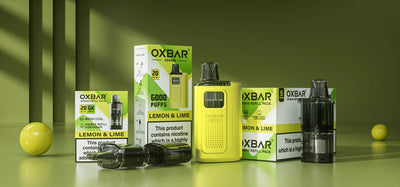Exploring Healthier Alternatives to Vaping: What Are Your Options?
As vaping grows in popularity, more people are questioning whether there are healthier alternatives. While vaping is often seen as a safer option compared to traditional smoking, it's essential to explore whether even healthier choices are available. In this comprehensive guide, we delve into various alternatives to vaping, their benefits, and their limitations.
Understanding the Vaping Landscape
Before exploring alternatives, it’s crucial to understand the context of vaping. Vaping is generally viewed as a less harmful option than smoking cigarettes because it eliminates combustion and reduces the intake of harmful chemicals like tar and carbon monoxide. However, despite these benefits, vaping is not without its risks, particularly when it comes to long-term health effects, which are still not fully understood.
The Pros and Cons of Vaping
Reduced Harm Compared to Smoking: One of the most significant advantages of vaping is its ability to eliminate the harmful by-products associated with smoking tobacco. For individuals looking to quit smoking, vaping can serve as a stepping stone. For a range of vaping products that might assist in this transition, you can explore options like disposable vapes on our Vape Offers website.
Potential Health Risks: While vaping is a less harmful alternative to smoking, it still involves inhaling aerosolized substances. The long-term health implications of this are not yet fully known, and ongoing research is necessary to determine its full impact. Therefore, it’s worth considering whether other, even healthier, options might be more appropriate.
Healthier Alternatives to Vaping
If you're looking to move away from vaping, here are some healthier alternatives:
1. Nicotine Replacement Therapies (NRTs)
Nicotine replacement therapies, such as patches, gum, and lozenges, are proven methods for quitting smoking. These products provide a controlled dose of nicotine without the harmful chemicals found in cigarettes or e-cigarettes.
- Patches: These deliver a steady dose of nicotine throughout the day via the skin.
- Gum and Lozenges: These offer a more immediate nicotine fix, helping to curb cravings as they arise.
NRTs are widely available at local pharmacies or online health stores, offering a straightforward and accessible alternative to vaping.
2. Prescription Medications
Certain prescription medications, like varenicline (Chantix) and bupropion (Zyban), are designed to aid in smoking cessation by targeting nicotine receptors in the brain. These medications can help reduce cravings and withdrawal symptoms, making the transition away from nicotine easier.
It's important to consult a healthcare professional to determine whether these medications are suitable for you.
3. Behavioral Therapy and Support
Quitting smoking or vaping often requires addressing the psychological aspects of addiction. Behavioral therapy, counseling, and support groups can be highly effective in this regard. These resources provide strategies for managing cravings and coping with triggers, offering a structured path to quitting.
Look for local support groups or online forums where you can connect with others who are on a similar journey. The social aspect of quitting can be incredibly beneficial in maintaining motivation.
4. Mindfulness and Stress Management
Stress and anxiety are common triggers for smoking and vaping. By incorporating mindfulness practices, such as meditation, yoga, or deep breathing exercises, you can manage stress more effectively and reduce the urge to reach for nicotine.
There are numerous apps and online resources available to help guide you through these practices, making it easier to integrate them into your daily routine.
5. Adopting a Healthier Lifestyle
A healthier lifestyle can support your efforts to quit smoking or vaping. Regular exercise, a balanced diet, and adequate sleep are all critical components of overall well-being. These lifestyle changes can not only improve your physical health but also reduce cravings and withdrawal symptoms.
Incorporating these changes into your daily routine can make a significant difference in your journey toward quitting nicotine.
Conclusion: Finding Your Path to a Healthier Life
While vaping is often seen as a safer alternative to smoking, exploring healthier options can further enhance your well-being. Nicotine replacement therapies, prescription medications, behavioral therapy, mindfulness practices, and healthier lifestyle choices all offer effective ways to manage and overcome nicotine addiction.
For those who find vaping to be a useful tool in their transition away from smoking, it's important to choose high-quality products. Visit our main Vape Offers page to explore a range of vaping products, including e-liquids and disposable vapes, that may assist you in this process. You can also explore specific flavours like Watermelon Ice, Fruit Bomb, and Mr. Blue for a tailored vaping experience.
Ultimately, the best choice for your health is the one that aligns with your individual needs and goals. Seeking professional guidance can ensure you choose the most appropriate path forward. For more information and resources, consult reputable health organizations and healthcare professionals.
Embark on your journey to a healthier lifestyle today, and take the first step towards quitting nicotine for good.


